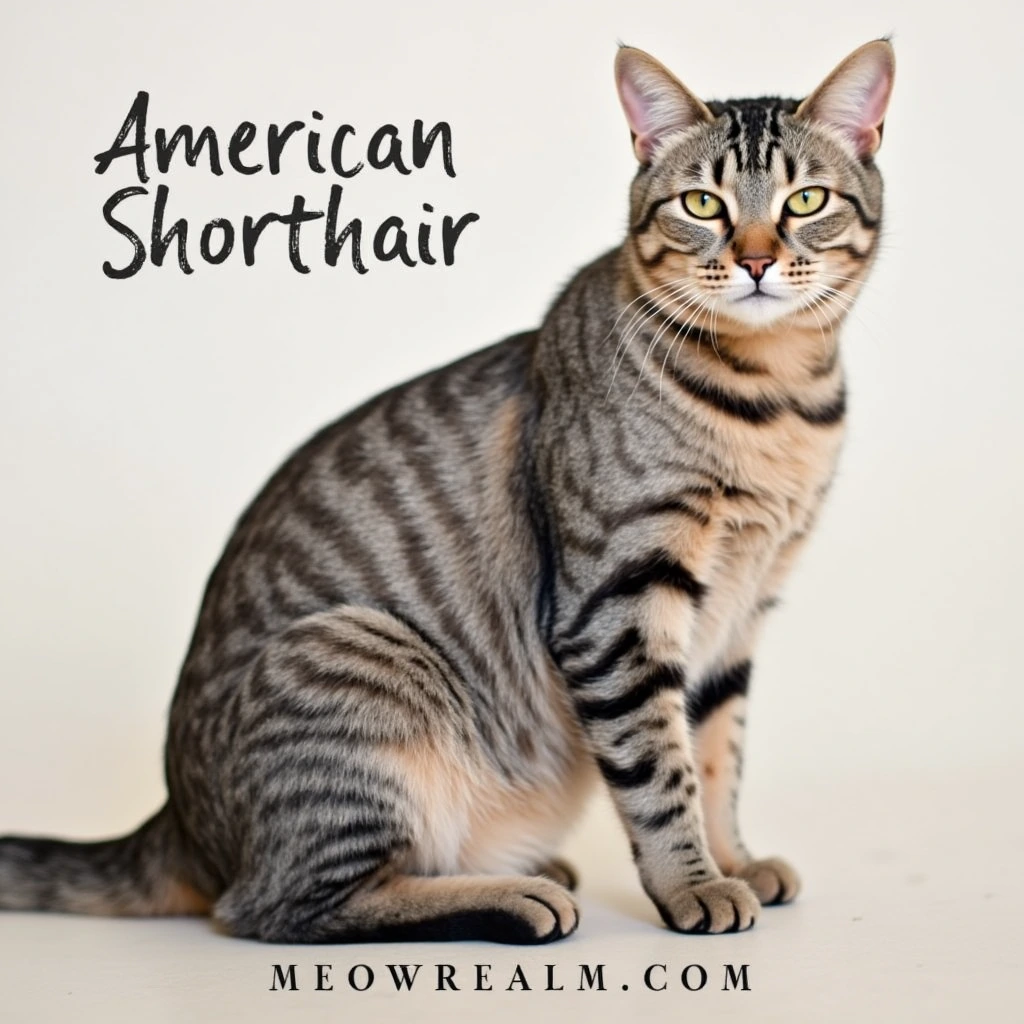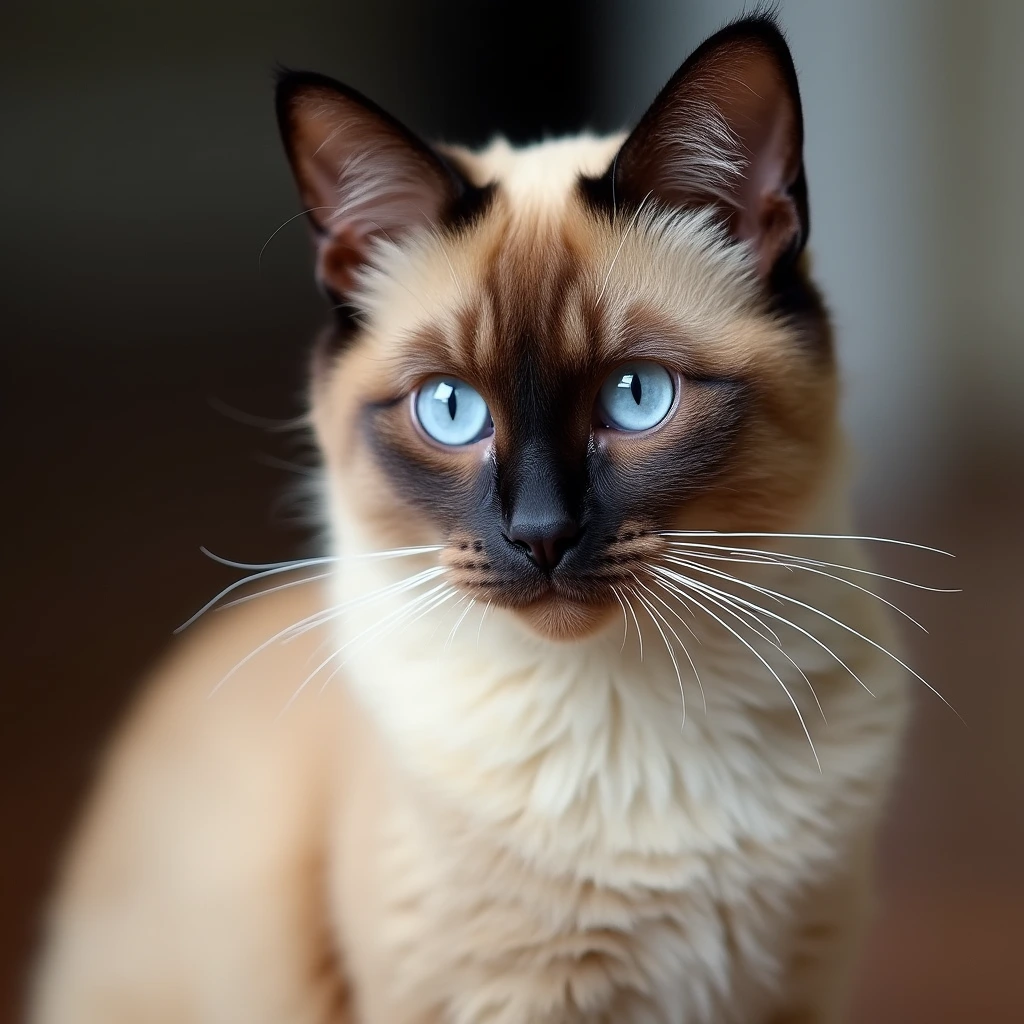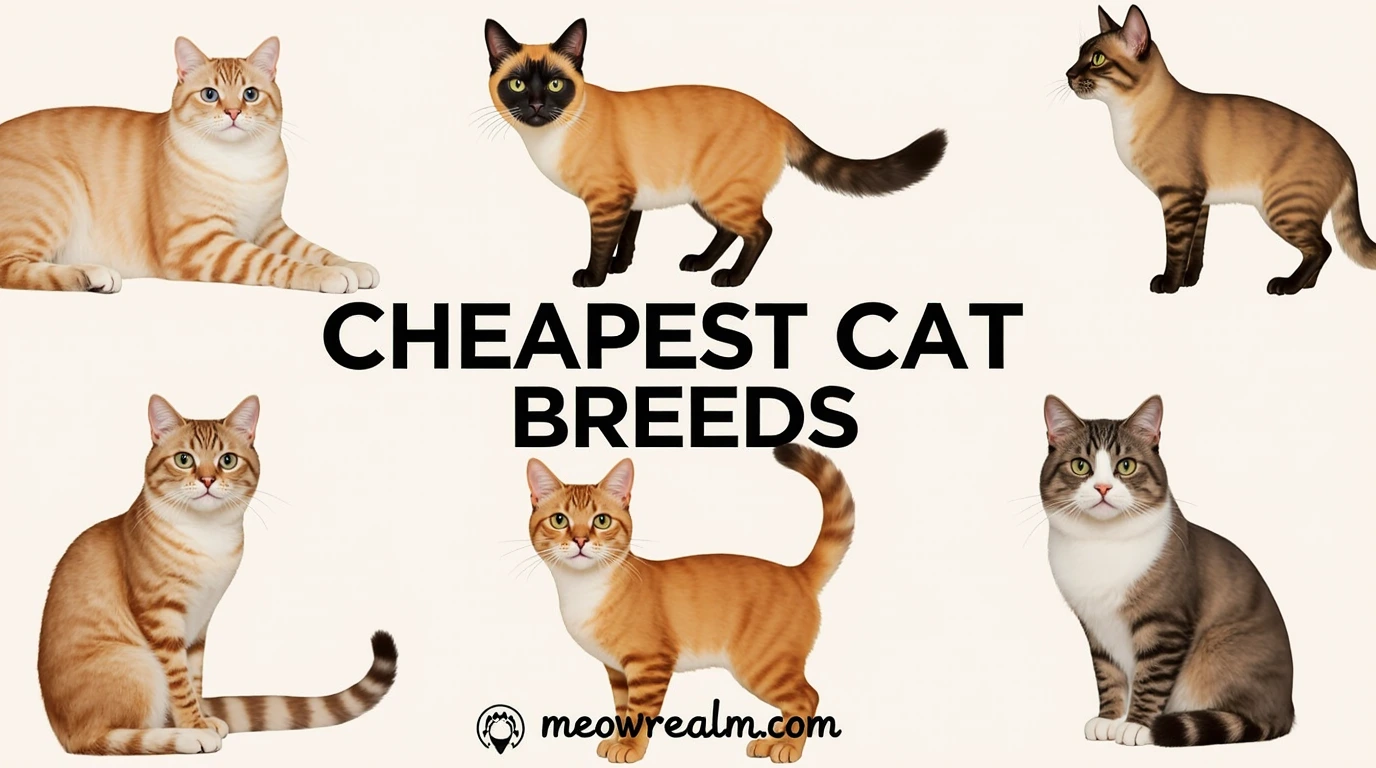Introduction:
Why “Cheapest Cat Breeds” Might Be Exactly What You’re Searching For
Let’s be honest—owning a cat isn’t just about cuddles and cuteness. It’s also about costs. If you’ve found yourself Googling “cheapest cat breeds,” you’re probably looking for a feline friend that won’t drain your bank account. And you’re not alone. In a world where vet bills can feel like surprise tax audits and gourmet kibble has its own aisle, affordability matters.
But here’s the twist: “cheap” doesn’t have to mean low quality. In fact, some of the most affectionate, low-maintenance, and healthy cats are surprisingly budget-friendly—especially if you know where (and how) to look. Whether you’re a first-time pet parent, a student in a tiny apartment, or a seasoned cat lover watching your wallet, this guide is for you.
In the sections that follow, we’ll unpack what makes a breed “cheap” (spoiler: it’s not just about the adoption fee), highlight the top affordable cat breeds for 2025, and show you how to minimize costs without cutting corners. Let’s dig into the fluff—and the facts.
Table of Contents
What Makes a Cat Breed “Cheapest”?
It’s tempting to think the cheapest cat breed is just the one with the lowest adoption fee—but that’s only the tip of the litter box. If you’re aiming for long-term affordability, you need to think beyond price tags and into the fine print of feline ownership. So, what really makes a cat “cheap”?
Key Cost Factors That Define “Cheapest”
1. Initial Acquisition Cost
Adopting from a shelter? You might only pay $50–$150. Buying from a breeder? That could hit $500–$3,000 depending on pedigree. Rescue cats—especially mixed breeds—tend to win hands-down here.
2. Grooming & Maintenance Needs
Some cats are high-glam, high-bill. Persians, for example, need regular grooming, while a Domestic Shorthair practically grooms itself. The more independent the coat, the cheaper the upkeep.
3. General Health & Lifespan
Vet visits are part of the deal—but frequency matters. Breeds with strong genetics and fewer hereditary conditions (like American Shorthairs) are often cheaper in the long run. Longevity helps, too—because losing a young cat to illness is not only tragic, it’s financially brutal.
4. Energy Levels & Temperament
It’s underrated, but behavior affects your wallet. Hyperactive or anxious cats might destroy furniture or require special training—costs that add up quickly. Calm, low-maintenance breeds are often more affordable across the board.
The Real Cost: Lifetime Ownership Breakdown
Owning a cat isn’t a one-time purchase—it’s a subscription. On average, a cat costs:
- $50–$300 upfront (adoption + setup)
- $40–$100/month (food, litter, basic vet care)
- $800–$1,200/year conservatively
That’s $10,000–$20,000+ over a cat’s lifetime. And yes, that’s before emergency vet visits.
FAQ — “Is the cheapest cat always the least expensive long-term?”
Not necessarily. A cat with a low adoption fee but chronic health problems, specialized diets, or destructive behavior can cost far more over its lifetime than a slightly more expensive but healthier, low-maintenance breed. Always factor in both upfront and ongoing costs.
Top 5 Cheapest Cat Breeds (2025 Edition)
Let’s cut to the chase: if you’re serious about finding a cat that fits your budget without compromising on charm, these five breeds consistently rank as the most affordable. But affordability isn’t just about the adoption fee—it’s about low upkeep, minimal vet bills, and a temperament that won’t send your furniture (or sanity) into freefall.
1. Domestic Shorthair (DSH) cheapest cat breeds.

Adoption Cost: $50–$100
Monthly Expenses: Low
Why It’s Cheap: Common, healthy, low-maintenance
These are your everyday, no-fuss cats—often called “mutts” of the feline world. But don’t let that fool you. Domestic Shorthairs are tough, adaptable, and ridiculously easy to care for. You’ll find them in nearly every shelter, often fully vaccinated and spayed/neutered, which cuts costs even more.
Think of DSH cats as the denim jeans of the cat world: casual, durable, and fit just about everyone.
2. American Shorthair cheapest cat breeds.
Adoption/Breeder Cost: $100–$300
Health Costs: Minimal over time
Why It’s Cheap: Hardy genetics, long lifespan
They’re known as the all-American cat for a reason—these guys were bred to work (mousing on ships, no less). With a lifespan often exceeding 15 years and a chill temperament, American Shorthairs give you years of companionship without drama or bills.
Low drama. High cuddle. Repeat for 15 years.
3. Siamese (Adopted) cheapest cat breeds.

Adoption Cost: $100–$200
Upkeep: Medium (vocal, active)
Why It’s Cheap: Common in rescues, robust health
Elegant and talkative, Siamese cats are often surrendered due to their overly chatty nature—but that just means more affordable rescues for you. Their short coat is easy to maintain, and they bond tightly with their humans. Just know: you’re signing up for daily conversations.
If you’re cool with a cat that acts like your nosy roommate, this is your budget pick.
4. Persian (Older/Rescue) cheapest cat breeds.
Adoption Cost: $75–$250 (older cats)
Grooming Costs: High
Why It’s On the List: Older rescues are common and cheap
This one’s a bit controversial. Purebred Persians from breeders are pricey, yes. But older or special-needs Persians are often heavily discounted through rescues. If you’re okay with some grooming effort, they’re sweet, quiet companions.
Cheap to adopt, but keep a brush—and your vet—on speed dial.
5. Maine Coon (Rescue) cheapest cat breeds.

Adoption Cost: $150–$300
Food Costs: Moderate to high (they’re big!)
Why It’s Worth It: High value for low upfront cost
These gentle giants are adored for their dog-like personalities and fluff. Breeders will charge you thousands, but rescues often have Maine Coon mixes for a fraction of the price. Yes, they eat more—but they rarely have health issues and are famously low-drama.
Big cat, big love, medium cost—call it the Costco version of a pet.
FAQ — “Are cheaper cat breeds less affectionate or friendly?”
Not at all. Many affordable breeds, especially rescues like Domestic or American Shorthairs, are deeply affectionate. In fact, cats that cost less often come from shelters where they’ve already been socialized and are ready to bond.
Cheapest Cat Breeds At-a-Glance: Comparative Cost Table
Sometimes, you just need the numbers. No fluff (pun semi-intended). Here’s a side-by-side breakdown of the most affordable cat breeds, showing you exactly how they stack up in terms of adoption, setup, monthly upkeep, and potential health costs. Because when budgets matter, clarity matters more.
| Breed | Adoption Cost | Setup Cost | Monthly Expenses | Health Risks/Costs |
|---|---|---|---|---|
| Domestic Shorthair | $50–$100 | $100–$150 | $30–$50 | Very low; generally healthy |
| American Shorthair | $100–$300 | $150–$200 | $40–$60 | Low; hardy breed |
| Siamese (Rescue) | $100–$200 | $150–$250 | $40–$60 | Medium; dental issues possible |
| Persian (Rescue/Older) | $75–$250 | $200–$300 | $50–$80 | High; eye and kidney concerns |
| Maine Coon (Rescue) | $150–$300 | $200–$350 | $60–$100 | Medium; larger = higher food/vet costs |
Notes:
- Setup Cost includes litter box, carrier, toys, basic vet checkup.
- Monthly Expenses include food, litter, flea prevention, and occasional treats.
- Health risk estimates are based on breed tendencies, not individual outcomes.
TL;DR: Domestic Shorthairs win the affordability race hands-down, but if you’re willing to adopt and plan smart, even a Maine Coon can be budget-friendly.
FAQ — “What’s the most cost-effective cat breed overall?”
Domestic Shorthair. It combines low adoption cost, minimal maintenance, and strong overall health. They’re widely available, adaptable, and often come pre-vetted through shelters. Bang-for-buck, they’re nearly unbeatable.
Other Budget-Friendly Breeds Worth Considering
Let’s say none of the top five clicked with you—or maybe your local shelter just doesn’t have them. Don’t worry. There are still plenty of affordable feline companions out there that fly under the radar but check every box: lovable, low-maintenance, and light on the wallet.
Here are three breeds (and one wildcard) that deserve a spot on your affordability radar:
British Shorthair cheapest cat breeds.
- Adoption/Breeder Cost: $200–$500 (cheaper if adopted older)
- Why Consider It: Sturdy, calm, and famously low-drama
- Watch Out For: Slightly higher upfront cost, but long-term savings due to low vet bills
British Shorthairs are basically the chill uncles of the cat world—quiet, undemanding, and totally fine being left alone. They’re not the cheapest up front, but they often live long, healthy lives with minimal fuss.
Exotic Shorthair cheapest cat breeds.
- Adoption Cost: $150–$400 (especially if not show-quality)
- Why Consider It: Persian-like look, but way less grooming
- Watch Out For: Can still have respiratory issues due to flat faces
If you love the look of a Persian but dread the maintenance, Exotic Shorthairs offer a much more affordable middle ground—both in cost and care. They’re playful, gentle, and ridiculously photogenic.
Tabby (Mixed-Breed) cheapest cat breeds.
- Adoption Cost: $25–$100 (shelters often discount tabbies)
- Why Consider It: Everywhere, adaptable, hearty
- Watch Out For: No major downsides if adopted from a reputable source
Tabbies aren’t a breed, technically—they’re a coat pattern. But most shelters are full of sweet, healthy tabby cats that need homes. And they’re usually among the least expensive cats to adopt.
Wildcard: Senior or Special-Needs Cats
- Adoption Cost: Often FREE or highly discounted
- Why Consider It: Already trained, mellow, deeply affectionate
- Watch Out For: Higher health care needs, but many shelters cover initial treatments
Senior cats are the overlooked treasures of the cat world. They’re calm, cuddly, and often come with waived adoption fees. Yes, some have medical needs—but many have already had dental work, vaccinations, and spaying/neutering done.
FAQ — “Are older cats a smart option for budget-conscious adopters?”
Absolutely. Many older cats are already trained, vaccinated, and less destructive. Plus, shelters often waive or drastically reduce fees to encourage senior adoptions—making them a compassionate and cost-effective choice.
Cost-Saving Tips for Cat Owners (Without Cutting Corners)
So you’ve picked your breed—or maybe just decided to adopt. Either way, budget-friendliness doesn’t stop at the adoption center door. The real financial game is in how you care for your cat, not just which one you choose.
Here’s how to keep costs low while still being the kind of pet parent your future cat would brag about.
1. Adopt, Don’t Shop (Seriously)
Adoption isn’t just morally rewarding—it’s economically brilliant. Most shelters include:
- Vaccinations
- Spay/neuter surgery
- Microchipping
- Initial vet checks
That bundle alone can save you hundreds. Bonus: shelters sometimes run “free adoption” events or discounts for senior cats or bonded pairs.
2. Skip the Fancy Litter Box—But Not the Litter
You don’t need a $300 self-cleaning box. A standard litter pan with a good-quality clumping litter (bought in bulk) does the job. And don’t fall for scented varieties—many cats hate them, and they’re often overpriced.
3. DIY Where It Counts
- Toys: Crumpled paper, toilet paper rolls, cardboard boxes—free fun.
- Scratch Posts: Make one with a wooden post and sisal rope.
- Beds: Your laundry pile probably already qualifies.
4. Choose Preventative Vet Care Over Emergency Visits
Set aside $10–$20/month in a pet emergency fund if insurance isn’t feasible. Catching issues early (with annual checkups) is far cheaper than waiting for a midnight ER run.
5. Bulk Buy the Basics
Food, litter, flea meds—buying in larger quantities saves money and stress. Sign up for auto-ship discounts through pet retailers, or check local animal rescues for supply drives.
6. Consider Pet Insurance (Yes, Really)
It sounds counterintuitive when budgeting, but basic plans often cost less than $20/month and can save you thousands if your cat develops chronic issues or needs surgery.
TL;DR: Smart planning > constant spending. A bit of DIY and some forethought can stretch your pet budget further than you’d think.
FAQ — “Is pet insurance really worth it for cheap cat breeds?”
It can be. Even low-cost breeds can develop health issues over time. A budget plan helps you avoid large, unexpected vet bills—especially for surgeries or chronic illnesses. At minimum, consider starting a monthly savings fund as a safety net.

